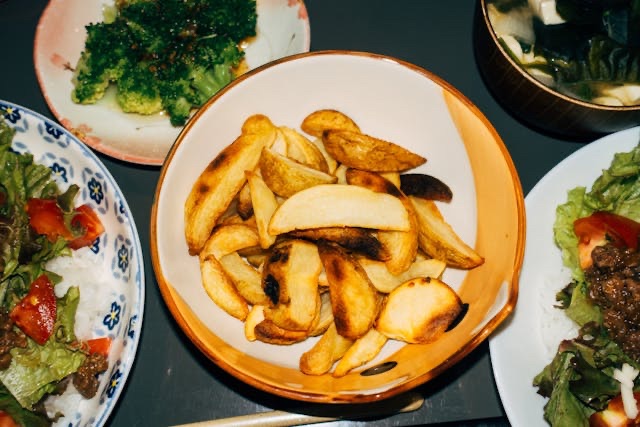Some foods have quietly altered the course of history. The potato, coffee, and cheese each transformed human society—not simply by feeding people, but by shaping economies, accelerating cultural exchange, and influencing the rhythms of daily life.
The potato’s caloric efficiency helped sustain population booms and industrial growth. Coffee’s arrival in cities sparked new forms of social gathering and intellectual exchange. Cheese, one of humanity’s oldest preservation techniques, became both a survival strategy and a symbol of place. Taken together, their stories show how the history of food is also the history of civilization.
Trend Snapshot
| Aspect | Details |
|---|---|
| Trend Name | Foods That Reshaped Civilization |
| Definition | The global historical impact of potatoes, coffee, and cheese on population growth, cultural exchange, and economic systems |
| Origins | Potato: Andes (South America), Coffee: Ethiopia & Yemen, Cheese: multiple ancient origins (Middle East, Central Asia, Europe) |
| Key Cultural Impacts | Population growth, industrial workforce support, political and intellectual movements, preservation of local identity |
| Present-Day Relevance | Global dietary staples, cultural rituals, artisanal and industrial production |
| Popular Hashtags | #FoodHistory, #GlobalCuisine, #CulturalHeritage |
| Target Demographics | Cultural readers, food history enthusiasts, culinary travelers |
| Trend Phase | Enduring—historic origins, ongoing cultural relevance |
The Potato Revolution: The Calorie That Built Cities
The potato’s journey began in the high Andes, where it was cultivated for thousands of years by Indigenous communities. Spanish trade networks carried it to Europe in the mid-16th century. Its appeal was practical: potatoes could grow in poor soils, tolerate harsh climates, and yield far more calories per acre than wheat.
By the 18th century, these traits were changing demographic realities. In many regions, potato cultivation reduced the frequency and severity of famine. More stable food supplies freed up labor for urban industries, feeding the human engine of the Industrial Revolution.
Historians debate the scale of the effect, but some estimates suggest potatoes were linked to as much as a quarter of population and urbanization growth across the Old World between 1700 and 1900. Outside Europe, potatoes became important in China’s mountainous regions and as a highland crop in Africa. Their global spread made them a rare example of a single plant shifting both subsistence farming and industrial economies at the same time.
Coffeehouses and the Wiring of Global Conversation
Coffee likely originated in the Ethiopian highlands, where wild coffee cherries still grow. By the 15th century, it was cultivated in Yemen and traded across the Red Sea. The Ottoman Empire embraced the drink, developing a rich coffeehouse culture that blended performance, conversation, and politics.
When coffee reached European cities in the 17th century, it took on new social roles. Coffeehouses became “penny universities,” where a single coin bought admission to a world of news, debate, and business networking. The sober environment contrasted with taverns, and some historians see this as a factor in the era’s intellectual and political ferment.
The pattern wasn’t unique to Europe. Coffeehouses in Persia, India, and North Africa developed in parallel, each shaping public life in its own way. Colonial expansion pushed coffee cultivation into tropical zones—Java, the Caribbean, Brazil—reshaping economies and landscapes. By 1852, Brazil had become the world’s largest coffee producer, a position it still holds.
Cheese: The World’s First Edible Time Capsule
Cheese-making is among the oldest known food technologies, dating back over 7,000 years. One widely accepted theory is that it began accidentally when milk stored in animal stomachs curdled due to natural enzymes. The process transformed perishable milk into a product that could be stored for months, traded, and consumed in diverse forms.
Ancient Egyptians depicted cheese-making in tomb art. Romans developed large-scale production and spread techniques across their empire. In medieval Europe, monasteries became centers of refinement, producing distinctive regional cheeses—some of which survive today.
Cheese-making adapted to climate, geography, and local microbial life. This created an extraordinary diversity: hard cheeses in arid areas, soft-ripened varieties in cooler, damp climates. Beyond Europe, fermented dairy traditions in Central Asia, the Middle East, and the Indian subcontinent reveal cheese’s global reach long before industrialization carried it worldwide.
Why These Foods Still Matter
The potato, coffee, and cheese each transformed the conditions in which societies could grow, work, and connect. Together, they illustrate how food is never just sustenance—it’s a technology, a social network, and a cultural archive.
These foods remain deeply relevant: potatoes feed billions, coffee supports millions of livelihoods, and cheese continues to be both a mass-market staple and an artisanal heritage product. The patterns they set in motion—linking agriculture to economic growth, connecting drink to public life, turning preservation into identity—are still visible in the way we eat and live today.
If you’re curious about how other foods have shaped global culture, explore our feature on History’s Greatest Food Trends.

